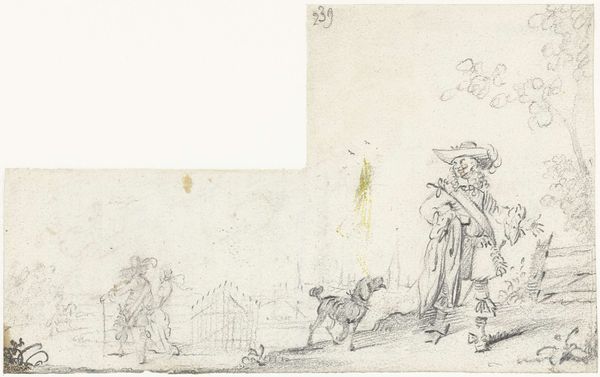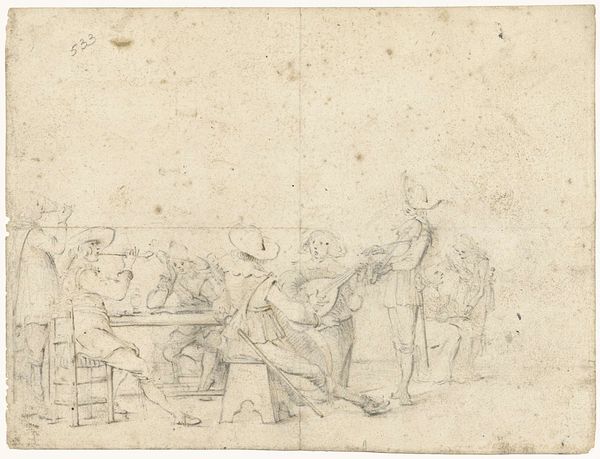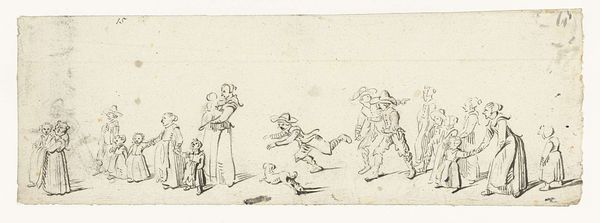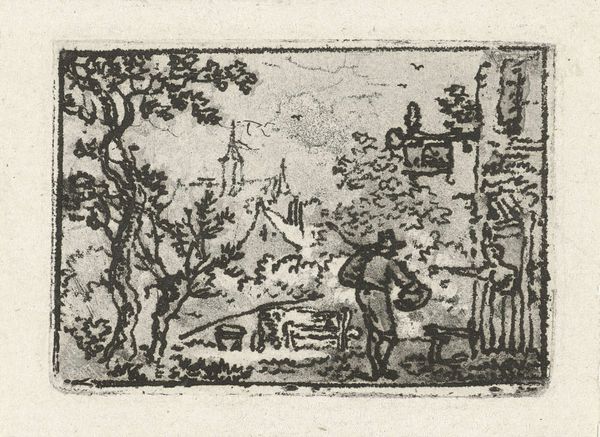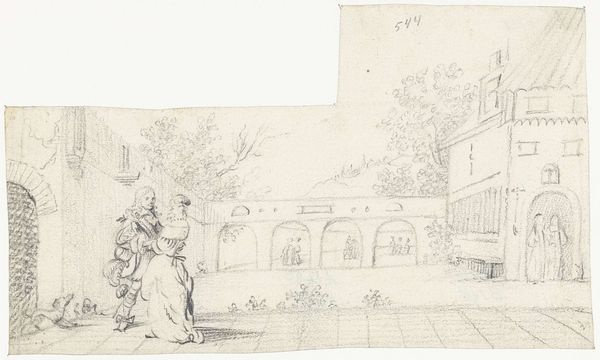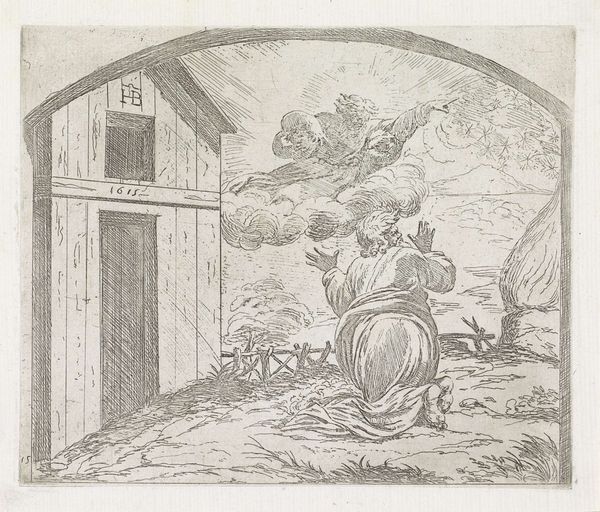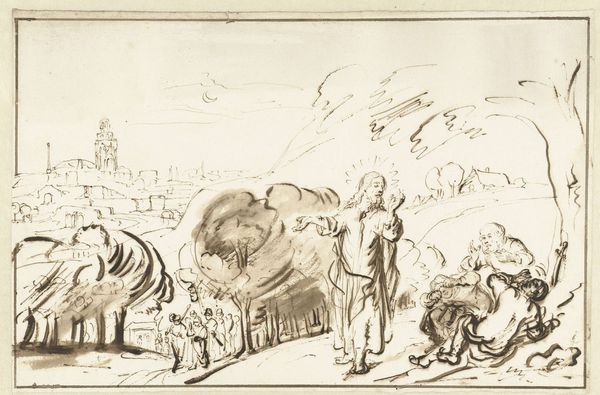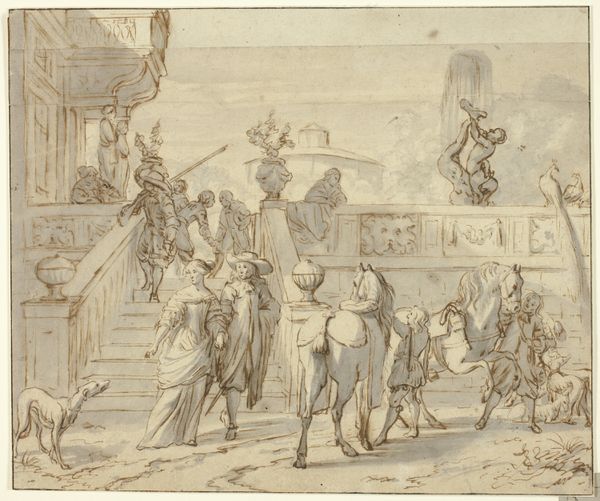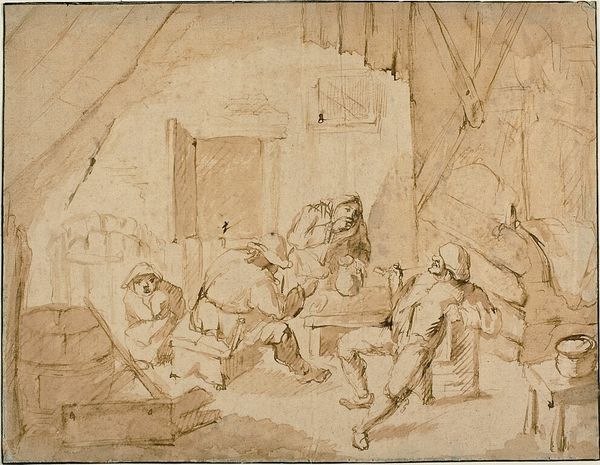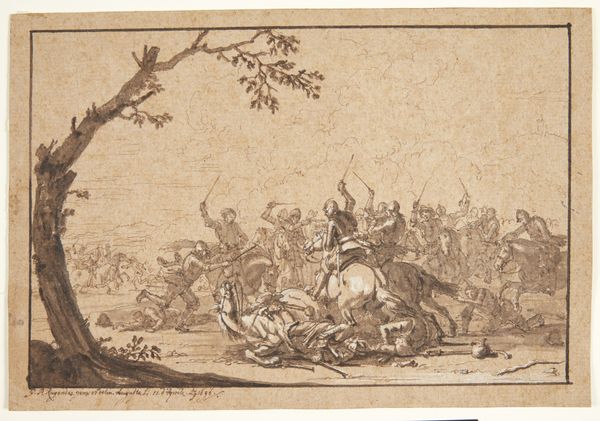
Herberginterieur met twee dode mannen en een beschonken man before 1659
gesinaterborch
Rijksmuseum
drawing, pencil
drawing
baroque
dutch-golden-age
figuration
pencil
genre-painting
Dimensions: height 134 mm, width 200 mm
Copyright: Rijks Museum: Open Domain
Curator: Here we have Gesina ter Borch's drawing, "Tavern Interior with Two Dead Men and a Drunken Man," predating 1659. The medium is graphite, pencil, on paper. What catches your eye first about this dramatic tableau? Editor: Oh, the casual debauchery, certainly. It’s as if chaos and death were commonplace, just another Tuesday night at the tavern. There is such a lack of ceremony to how these bodies lie, like discarded puppets after the show. Curator: It’s intriguing, isn’t it? This was the Golden Age but, hey, look closely: Death shares the spotlight with celebration in these tavern interiors. Think about the composition. What does the boozing guy at the barrel have to do with the drama to the right? Editor: I see him perched almost smugly on that barrel, observing, gesturing almost like a storyteller or perhaps an instigator to what may follow. It creates such an unsettling balance, that air of, ‘anything goes’. The dead aren’t quite centered – so everything still feels a little fluid, unresolved. Even though there is finality implied. Curator: The artist is subtly questioning the supposed triumphs of that gilded era. You also get such strong theatrical sense. Could it be a sketch for a stage production perhaps? Editor: Perhaps, it feels like a moralizing play. I see so many traditional Vanitas symbols lurking: the upturned chair symbolizes disruption, the dropped hat and sword represent status abandoned, while those men in the background look as if they are performing some other drunken scene entirely. What about the oddity of what appear to be figures, frozen mid-dance? Curator: You're right! It does hint at that ephemeral, dreamlike quality, like a phantom memory superimposed upon a grim reality. Ter Borch is cleverly weaving together mundane life, philosophical inquiry, and even satire in what might appear, at first glance, as a standard genre scene. Editor: So we are compelled to acknowledge death even at the revelry's peak. Ter Borch uses symbolism not as an explanation, but rather as an invitation to consider what is real. So interesting. Curator: Definitely something to take with us: consider the shadows even on brightest days!
Comments
No comments
Be the first to comment and join the conversation on the ultimate creative platform.
